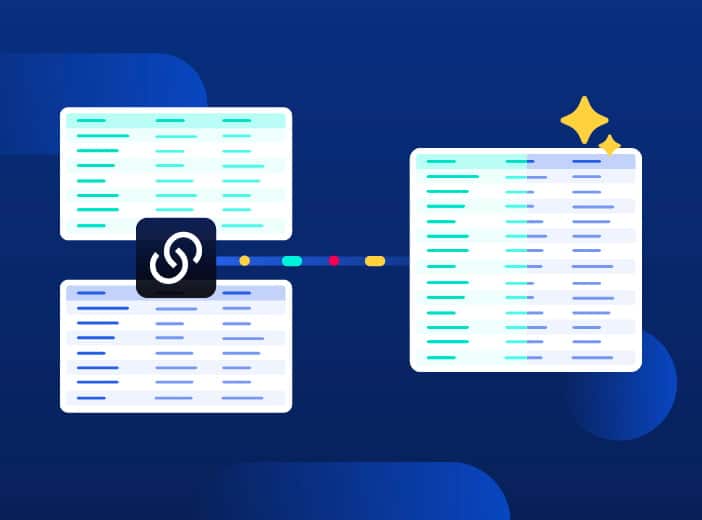Glossary
Data governance
Data governance covers how you identify, organize, handle, manage, and use data collected in your organization, reducing risk and enabling agility.
What is data governance?
Data governance covers how you identify, organize, handle, manage, and use the data collected in your organization.
Along with developing a data culture, it is central to becoming data-driven. Consequently, industry associations and analysts have created a range of definitions of the term:
- Gartner: “The specification of decision rights and accountability framework to ensure the appropriate behavior in the valuation, creation, consumption, and control of data and analytics.”
- Data Governance Institute: “A system of decision rights and accountabilities for information-related processes, executed according to agreed-upon models which describe who can take what actions with what information, and when, under what circumstances, using what methods.”
Data governance frameworks provide standards and processes to ensure that data is accurate, complete, valid, timely, consistent, available and compliant with regulations. Frameworks govern:
- Who is responsible for different datasets
- How data is stored, protected and retained
- Who has access to which data, and ensuring data availability
- How data is described, to ensure consistency
What are the aims of data governance?
It can meet two types of objective – reactive and proactive:
- Reactive aims – manage risk by ensuring:
- Data security
- Data privacy
- Data consistency
- Data quality and integrity
- Controlled access to data and that it is used correctly
- Regulatory compliance (such as with the CCPA and GDPR)
- Proactive aims – create new value by:
- Breaking down silos between departments to share data
- Providing greater data access to enable innovation, efficiency and agility
- Building a shared vocabulary around data, enabling greater collaboration
How does data governance benefit an organization?
It ensures that data is available across the organization, and is accurate, trustworthy and compliant. That leads to:
- Better, faster decision-making, enabling new opportunities
- Reduced data management time/resources
- Stronger, easier compliance with regulations
- Increased value from data, both inside and outside the organization
- Greater efficiency through data and process automation
- Higher innovation through data analysis, both by humans and AI
- Demonstrating these benefits, McKinsey says that “data governance is one of the top three differences between firms that capture the value of digitization and firms that don’t.”
What does a data governance framework contain?
A framework is responsible for how data is managed across its lifecycle. It includes:
- Aims, objectives, and responsibilities, focused on the business value governance provides
- Policies covering data discovery, availability, integrity, quality, security, usability, and access/sharing
- A common vocabulary to describe data across the organization
- An organizational model and team to manage data and enforce governance
- Training and communication for all users on what it means and why it is important
- Measurement of activities against business-focused KPIs
What are the roles within a data governance team?
To ensure success, the team has to combine senior level involvement and cross-organization involvement of all those responsible for creating, managing, and using data. It should include the following:
- Chief Data Officer (CDO) or other senior leader, with hands-on involvement in the program and overall responsibility
- Data Governance Officer, responsible for day-to-day management
- Data Council, made up of senior management that sets strategy and monitors performance
- Data Governance Committee, made up of data owners and practitioners from across the organization, responsible for ongoing activities
- Data Stewards, responsible for the integrity, quality and availability of specific datasets. These are normally business specialists from within particular departments
- Data Custodians, responsible for the technical management and storage of data. These are normally from within the IT department
What are the challenges to effective data governance?
The challenges to successful data governance programs fall into two main areas:
- The difficulty of demonstrating business value: Projects can be seen as technical and not helping meet business objectives. This leads to senior management not supporting or investing in data governance, sidelining or stopping projects.
- Cultural issues: Without a data culture that breaks down silos between departments, employees may not see the point of involving themselves in data governance or data projects. This lack of employee engagement means governance is not followed effectively.
What best practices underpin successful data governance?
Overcoming these challenges and achieving the benefits of data governance requires organizations to adopt key best practices, such as:
- Ensuring senior management understanding and involvement: Link it to business priorities, so that it is seen as delivering value, rather than being a regulatory cost.
- Starting small and growing: Focus initially on critical areas and datasets, before increasing the scope of your project. This ensures quick wins and greater business acceptance.
- Collecting and involving all data owners: Bring data owners from every department on-board, involving them to ensure they back the project.
- Using the right model: The governance requirements of regulated industries, such as financial services, will be stricter than sectors such as retail. Choose the right governance model to minimize risk, and maximize data use.
- Creating and communicating clear processes: Start with a transparent set of principles to build your governance framework and communicate these across the organization to explain the project and its aims.
- Training everyone on the benefits: It is central to building a data-driven organization. So, ensure everyone understands the potential of your project and are trained on how it helps them in their working lives.
- Managing on an ongoing basis: Constantly monitor your project and improve your governance model. However, ensure that your team are not just seen as a “data policeman” by recognizing and rewarding good practice throughout the organization too.
Learn more

Blog
Opendatasoft harnesses agentic AI to connect AI models to real-world data, driving greater business impact
What is agentic AI and how does it help increase data consumption? Our Q&A blog explains the current state of AI, and how Opendatasoft is innovating to drive forward its impact for customers.

Blog
Opendatasoft boosts data enrichment, even when using the largest reference sources
Enriching your data is a key step in creating relevant insights and analysis that drives value. However, when it comes to using massive reference sources such as national company databases, detailed weather data or geographic/administrative boundary datato enrich your data, technical limitations often become a challenge.

Blog
Successfully scaling data products – best practice from McKinsey
Data products are central to increasing data consumption across the organization. But how can you ensure your data product program delivers lasting value? We explore the latest best practice from McKinsey, designed to scale data product creation and usage.
